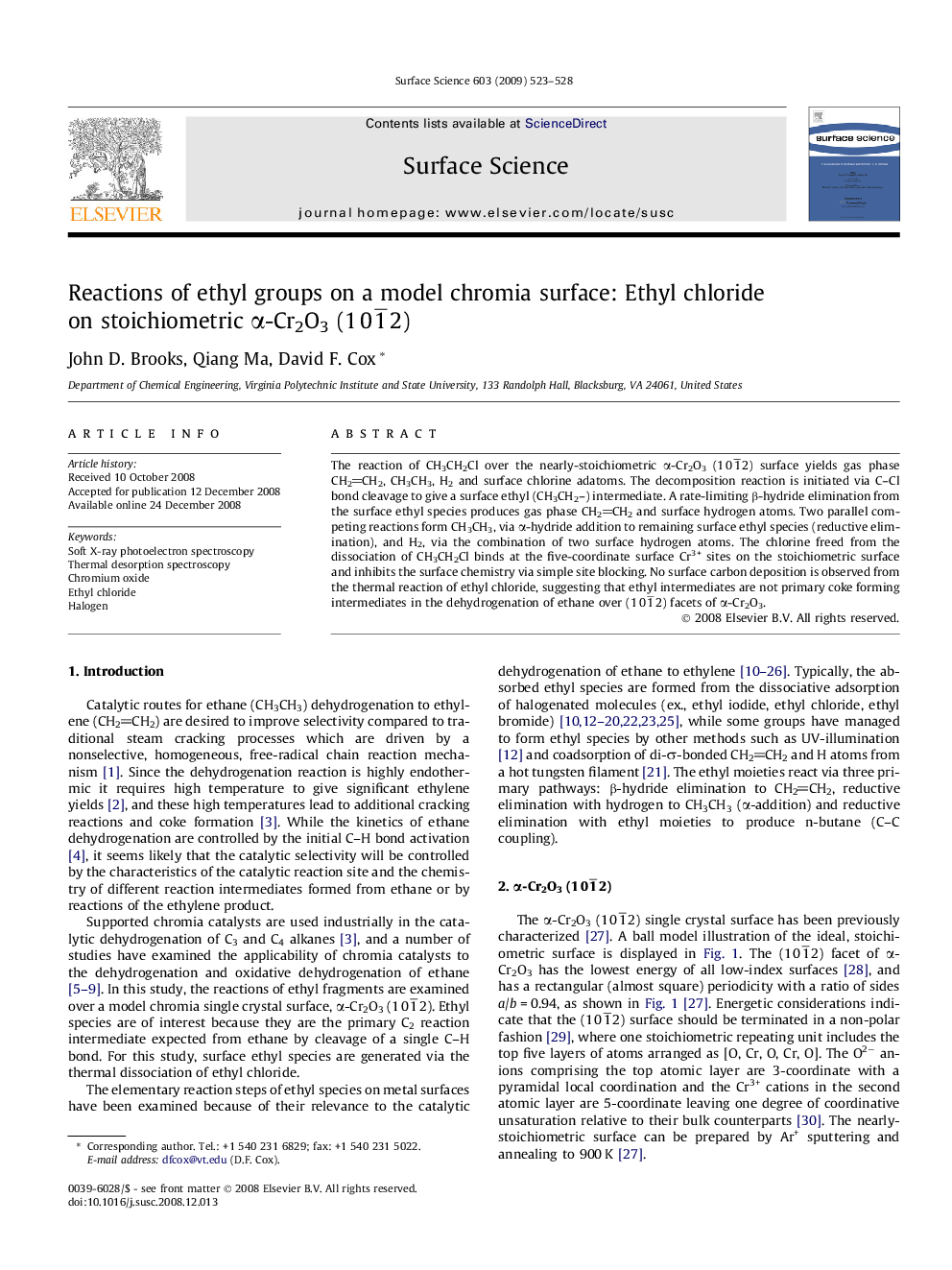| Article ID | Journal | Published Year | Pages | File Type |
|---|---|---|---|---|
| 5424030 | Surface Science | 2009 | 6 Pages |
The reaction of CH3CH2Cl over the nearly-stoichiometric α-Cr2O3 (1 0 1¯ 2) surface yields gas phase CH2CH2, CH3CH3, H2 and surface chlorine adatoms. The decomposition reaction is initiated via C-Cl bond cleavage to give a surface ethyl (CH3CH2-) intermediate. A rate-limiting β-hydride elimination from the surface ethyl species produces gas phase CH2CH2 and surface hydrogen atoms. Two parallel competing reactions form CH3CH3, via α-hydride addition to remaining surface ethyl species (reductive elimination), and H2, via the combination of two surface hydrogen atoms. The chlorine freed from the dissociation of CH3CH2Cl binds at the five-coordinate surface Cr3+ sites on the stoichiometric surface and inhibits the surface chemistry via simple site blocking. No surface carbon deposition is observed from the thermal reaction of ethyl chloride, suggesting that ethyl intermediates are not primary coke forming intermediates in the dehydrogenation of ethane over (1 0 1¯ 2) facets of α-Cr2O3.
